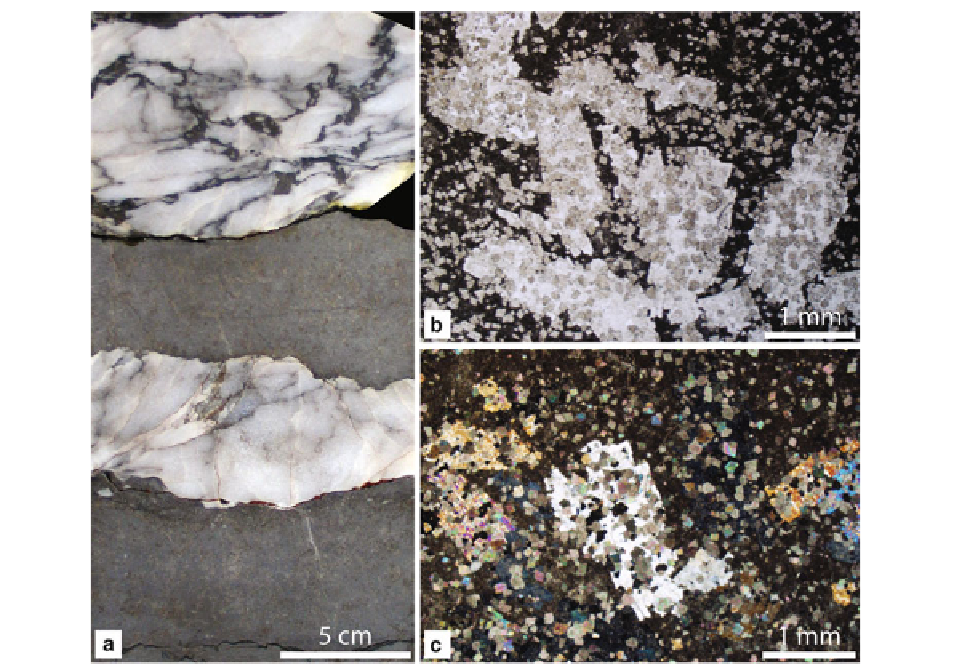Geology Reference
In-Depth Information
Fig. 21.7
(
a
) Cycles consisting of gypsum-anhydrite-bearing
limestone (
gray
) and anhydrite (
white
) with chicken wire fabric.
(
b
-
c
) Photomicrographs of the gray limestone portion in
(
a
) under normal light (
b
) and under polarized light (
c
), showing
scattered crystals and lenticular forms of gypsum and anhydrite
in a lime mudstone groundmass. Absence of subaerial exposure
features indicates deposition in a subtidal lagoon or in an inter-
tidal pond settings; Upper Jurassic Mozduran Formation in the
Kopet Dagh Basin, northeast Iran
lower to middle intertidal settings. Such stratifi cation is
common in ancient carbonate tidal deposits (Figs.
21.11
and
21.12a-c
) where the sand-sized layers may con-
sist of quartz sandstone (e.g. Y. Lasemi
1986
,
Y. Lasemi et al.
2008
; Ghomashi
2008
) or grainstone
(e.g., Demicco
1983
; Amin-Rasouli
1999
) indicating
deposition by high energy ebb or fl ood tidal currents.
The muddy dolomudstone or lime mudstone layers
represent deposition by the waning current during
the slack water period of a tidal cycle. It may be mud-
cracked (Fig.
21.12a
) or bioturbated by organisms
leaving vertical to sub-horizontal traces (Fig.
21.12c
).
Periodic pumping of water by tidal currents through
lowermost intertidal carbonate sands and subsequent
evaporation, results in cementation and formation of a
lithifi ed crust known as beachrock (Scoffi n and
Stoddard
1983
) (Fig.
21.13a, b
).
A feature diagnostic to tidal fl at environments is
birdseyes (fenestral fabric), which are millimeter-size
irregular voids and occur in stromatolite structures and
carbonates ranging from grainstone to mudstone in
texture (Figs.
21.6f
,
21.14
and
21.15
). They are com-
monly fi lled with cement (Figs.
21.6f
and
21.15
) or
geopetal internal sediment (Fig.
21.14a
). Birdseyes
commonly form as a result of air or gas bubble forma-
tion, desiccation shrinkage, wrinkles in the laminated
bacterial deposits or development of trapped air bub-
bles in the pore spaces during fl ood tide and subse-
quent rapid cementation (Shinn
1983b,
1986
) .
The lower intertidal/beach ridge facies of mainland
coasts with high salinity conditions are normally
characterized by packstone-grainstone facies contain-
ing peloids, intraclasts and/or a restricted range of
bioclasts, commonly small gastropods (Fig.
21.13b
).

